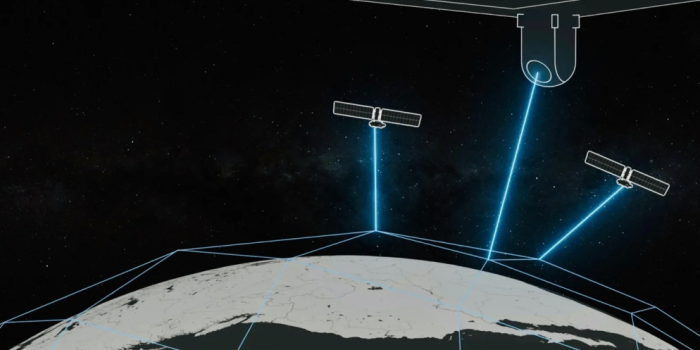In satellite internet, sluggish speeds and erratic reliability were once the norm. However, SpaceX’s Starlink initiative has shattered these preconceptions, demonstrating a paradigm shift in satellite-based connectivity. The company recently elevated Starlink’s performance by integrating laser communication technology, heralding a new era of swift and dependable connectivity.
Starlink subscribers and ground relays traditionally relied on radio frequencies within the Ku and Ka bands to connect to the network. However, the limitations of radio frequencies in data transmission have prompted SpaceX to introduce laser communication as a solution. Travis Brashears, a SpaceX engineer, highlighted the pivotal role of space lasers in enhancing the speed and efficiency of Starlink’s service delivery.

During the SPIE Photonics West optics conference, Brashears unveiled the remarkable capabilities of Starlink’s laser network, disclosing that over 9,000 lasers facilitate the transmission of terabits of data daily. Unlike radio frequencies, lasers offer unhindered data transmission, significantly reducing bottlenecks in communication. While ground stations predominantly handle data transmission within the Starlink network, satellite-to-satellite laser links accelerate communication manifold, particularly over vast expanses like the Atlantic and Pacific Oceans.
Starlink’s laser network functions like a mesh, with satellites forming nodes interconnected by light beams. Brashears elucidated that these nodes engage in continuous acquisition processes, with approximately 266,141 acquisitions occurring daily. Moreover, certain laser links can remain operational for extended periods, underscoring the reliability of laser communication. With an impressive transmission capacity of 5.6 terabytes per second across 9,000 lasers, Starlink facilitates the transfer of over 42 petabytes of data daily, equivalent to 28 million hours of 1080p HD video.

The unparalleled speed of laser communication benefits SpaceX and holds immense potential for other space ventures. NASA, for instance, is exploring laser communication for its missions, as demonstrated by the Psyche spacecraft’s successful data transmission back to Earth at 267Mbps using laser technology. This breakthrough paves the way for future space missions to leverage lasers as a primary mode of communication, revolutionizing interplanetary connectivity.
As space agencies and private enterprises embrace laser technology, the horizon of possibilities for space-based communication expands, promising unprecedented advancements in space exploration and connectivity.


